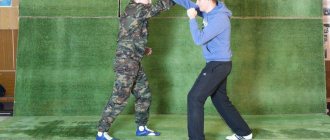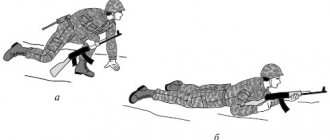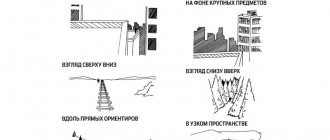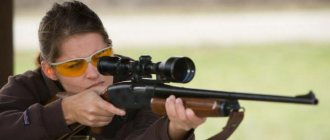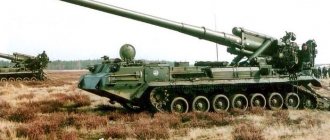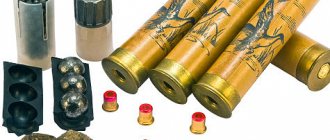Security guard training
- applicant's passport;
- certificates issued by an educational institution;
- conclusion of a medical examination (certificate in form 002 O-U, as well as a document in form N003-O/u from a narcologist and a psychiatrist’s report);
- 2 photographs measuring 4x6 cm;
- receipt of payment of state duty. According to paragraphs. 112 clause 1 art. 333.33 of the Tax Code of the Russian Federation, the amount of the state duty for performing this action is 2000 rubles.
- who are not citizens of the Russian Federation;
- under 21 years of age;
- those who have been convicted of committing an intentional crime or who have been charged with committing a criminal offense (until a court decision);
- recognized by the court as incompetent or partially capable;
- have not passed the medical examination;
- who have not undergone special professional training;
- suspended by the court from working in the Ministry of Internal Affairs or any branch of government;
- former civil servants dismissed on compromising grounds;
- whose license was canceled due to violation of the legislation on security activities and less than a year has passed since the cancellation;
- who were denied permission to work based on the results of an inspection conducted by the Department of Internal Affairs or the FSB;
- have not passed the mandatory fingerprint examination;
- registered with health authorities for mental illness, alcoholism or drug addiction.
07 Feb 2022 juristsib 532 Share this post
- Related Posts
- Are there any benefits for students on train tickets in 2020?
- How to calculate maternity leave in 2022 online calculator example
- Temporary Resident Foreign Citizens of Ukraine Personal Income Tax 2020
- How much money do they give for 3 children in Russia 2022 in Bashkiria
Handcuffing procedure
Before use, the case for handcuffs is opened, in which the locking device of the product remains unlocked in its primary position.
- In order to put on handcuffs, you need to hold them with your hand in the area of the locking device. Next, applying the sector to the offender’s wrist, press the locking device so that the sector rotates along its axis one hundred and eighty degrees and passes into the locking device. Then, pressing the sector in the direction of movement with such force that possible removal of the hand or excessive compression of the wrist, which can lead to disturbances in blood circulation, is excluded, put on a handcuff;
- After putting on the handcuffs and after establishing the required size (the bracelets should fit tightly around the wrists, and the hands should be easy to turn and fit snugly against the secured handcuffs), the locking mechanisms are moved to fixed positions. For these purposes, in handcuffs of the BR type, a key is inserted into the locking mechanism, which is turned clockwise, and in handcuffs of the BR-S type, the tail part of the key must lock the pusher.
Exercise 1. “Using a protective helmet”
- Before putting on handcuffs, the rings should be fully opened so that your hands can fit into them.
- Often, when putting handcuffs on, it is necessary to neutralize the enemy or limit his freedom, since in order to securely fix the handcuff rings on the wrists, the attacker’s hands must be as close to one another as possible. It is recommended to place your hands behind your back - in this position there is the least opportunity for attempting to open the handcuffs yourself.
- When putting it on, you should tightly wrap the rings around your wrists: this will not cause harm to your hands, but the fixation will be the most reliable. Only after checking that the material of the handcuffs is tightly connected to the skin of your hands can you slam them shut.
- The device is closed automatically, which ensures minimal time spent on neutralizing the attacker. At the same time, when closing, the size of the handcuffs is also formed, which are mainly fixed according to the “shark tooth” principle: a special mechanism does not allow increasing the size of the rings to a larger one.
Availability of active latch
Handcuffs, representing a convenient and reliable way of fixing a person’s hands for any, even quite a long time, have become popular and in demand today. Surely each of us has thought about the need to ensure both our own safety and the safety of our loved ones.
Rules for putting on special equipment such as handcuffs
Handcuffs can be placed on offenders in standing, lying down or kneeling positions. In this case, you should adhere to the following rules:
- Before handcuffing, using force or threatening to use a weapon, force the offender to take a position convenient for the guard, excluding the possibility of an attack on his part;
- The offender must be pressed with his body close to the surface of the ground, floor, wall, etc.;
- To put on handcuffs, one by one bends the arm behind the back with a painful effect;
- Avoid the possibility of locking mechanisms getting caught on elements of the offender’s outer clothing or body;
- Put handcuffs on the side of the offender, out of reach of his feet;
- Do not place the product on only one limb of the offender while holding the other in your hand. Being in this position, the offender will be able to deliver an unexpected blow without much difficulty.
Is it necessary to wear handcuffs when taking the 2022 exam: latest news, changes, tips
As always, we will try to answer the question “Do I need to wear handcuffs when taking the 2020 exam?” You can also consult with lawyers for free online directly on the website without leaving your home.
The person being tested performs both exercises in any order. A positive result of both exercises is counted as a successful test of practical skills in the use of civilian self-defense weapons.
The person being tested is 1.5 meters opposite the dummy. The rubber stick is on the belt (in the PR suspension).
At the command of the supervisor, “Start the exercise,” the person being tested takes the rubber stick out of the suspension and warns of his intention to use it: “Stop, I’ll use special equipment.”
Applies blows to the dummy (at least six) in various areas allowed for impact with a rubber stick. After this, the person being tested reports: “I have finished the exercise.”
Typical exercises for testing practical skills in the use of civilian self-defense weapons - FOR GUARDS 5 and 6 RANKS
A mock-up of the aerosol device is located on a table 2 meters from the mannequin. The person being tested is located at the table, opposite the dummy. The leader announces the direction of the wind relative to the one being tested (right or left) and gives the command “Start the exercise.”
The person being tested takes the aerosol device, makes it ready for use and warns of his intention to use it, “Stop, I’ll use a weapon.” Sprays a gas mixture (imitation) in the direction of the mannequin's face from the leeward side for 3 seconds.
After this he reports: “I’ve finished the exercise.”
To successfully pass the qualification exam, a security guard must answer all questions in the theoretical part (one mistake is allowed) and successfully pass the test of practical skills in handling special equipment. Therefore, test takers often receive an unsatisfactory grade precisely when passing the internship.
Typical exercises for security guards
Order of the Ministry of Internal Affairs of the Russian Federation dated August 22, 2011 N 959 Moscow “On amendments to the order of the Ministry of Internal Affairs of Russia dated July 15, 2005 N 568 and the Regulations approved by this order”
October 7, 2011 Registered with the Ministry of Justice of the Russian Federation September 30, 2011 Registration No. 21932
Amend the order of the Ministry of Internal Affairs of Russia dated July 15, 2005.
N 5681 “On the procedure for the internal affairs bodies of the Russian Federation to conduct periodic inspections of private security guards, private detectives (detectives) and employees of legal entities with special statutory tasks for suitability for action in conditions associated with the use of firearms and special means” and Regulations on the conduct by bodies Internal Affairs of the Russian Federation periodic inspections of private security guards, private detectives (detectives) and employees of legal entities with special statutory tasks for suitability for action in conditions associated with the use of firearms and special means in accordance with the attached List. Minister General of the Army R. Nurgaliev
A number of changes have been made to the Appendix regarding the repurposing and reorganization of divisions and structures of the Ministry of Internal Affairs of Russia.
The theoretical knowledge of private security guards will be tested using survey cards containing 7 questions for a 4th grade security guard, 9 questions for a 5th grade security guard, 10 questions for a 6th grade security guard, 10 questions for a 6th grade security guard, one of which is correct.
The concept of “first aid” has been replaced by “first aid”. The form of the Notification of delivery (sending) of an invitation to undergo an initial (scheduled, repeated) periodic inspection has undergone changes.
Typical exercises for the practical use of special means, the implementation of which is intended for private security guards and employees of legal entities with special statutory tasks when undergoing periodic testing for suitability to act in conditions associated with the use of special means
Exercise N 1. Using a protective helmet Procedure for performing the exercise: The person being tested is located near a table with protective helmets of 1 - 3 protection classes.
At the inspector’s command: “Put on a protective helmet of class 1 - 3!” The person being tested puts on a protective helmet of the specified class and reports: “I have finished the exercise.” The exercise time is 20 seconds.
Positive result: A protective helmet of the appropriate class is worn and fastened within the specified time.
Exercise N 2. Using a protective vest Procedure for performing the exercise: The person being tested is located near the table with protective vests of grades 1 - 5.
At the inspector’s command: “Put on a protective vest of class 1 - 5!” The person being tested puts on a protective vest of the specified class and reports: “I finished the exercise.” Exercise time: 20 seconds.
Positive result: The protective vest of the appropriate class is correctly worn and fastened within the specified time.
Exercise N 3. Using a rubber stick Procedure for performing the exercise: The person being tested is 1.5 meters opposite the dummy. The rubber stick is suspended on a belt.
At the inspector’s command: “Start the exercise!” the person being tested removes the rubber stick from the suspension and strikes the dummy (at least six) in various zones allowed for impact with the rubber stick. After this, the person being tested reports: “I have finished the exercise.” Exercise time: 20 seconds.
Positive result: Delivering at least six blows with a rubber stick on the dummy, without touching the parts that conventionally correspond to areas of the human body that are prohibited from using rubber sticks on them.
Exercise N 4. Use of handcuffs Procedure for performing the exercise: The person being tested is 1.5 meters opposite the dummy. The handcuffs are on the belt in a case. At the inspector’s command: “Put handcuffs on the front (or back)!” the person being checked takes the handcuffs out of the case, approaches the dummy and puts on the handcuffs depending on the command given.
After that he reports: “The handcuffs are on.” Exercise time: 20 seconds. After checking the correctness of putting on the handcuffs, at the examiner’s command: “Remove the handcuffs!”, the person being tested removes the handcuffs. Positive Result: Handcuffs were correctly applied within the specified time and then removed.
General requirements for performing exercises 1. When performing exercise No. 1, a protective helmet is worn in compliance with sanitary and hygienic standards (use of the person being tested’s personal headgear, napkins, liner). 2. Exercises No. 3 and No. 4 are performed on a mannequin, which should follow the contours of the human body.
In this case, the upper limbs should imitate the structure of the hand and have 3 degrees of freedom to ensure the execution of the exercise. 4. In exceptional cases, it is allowed to perform exercises No. 3 and No. 4 on a partner with his written consent.
In this case, during exercise No. 3, the partner must wear a protective vest. 5. When performing exercise No. 3, blows must be applied firmly, without using excessive force that could damage the dummy or injure a partner. 6.
Exercise No. 4 is considered to be performed correctly if, when worn, the handcuffs rotate freely and securely fix the limb.
Evaluation of the implementation of exercises for the practical use of special means Exercises for the practical use of special means are considered completed if positive results are obtained from them.”
